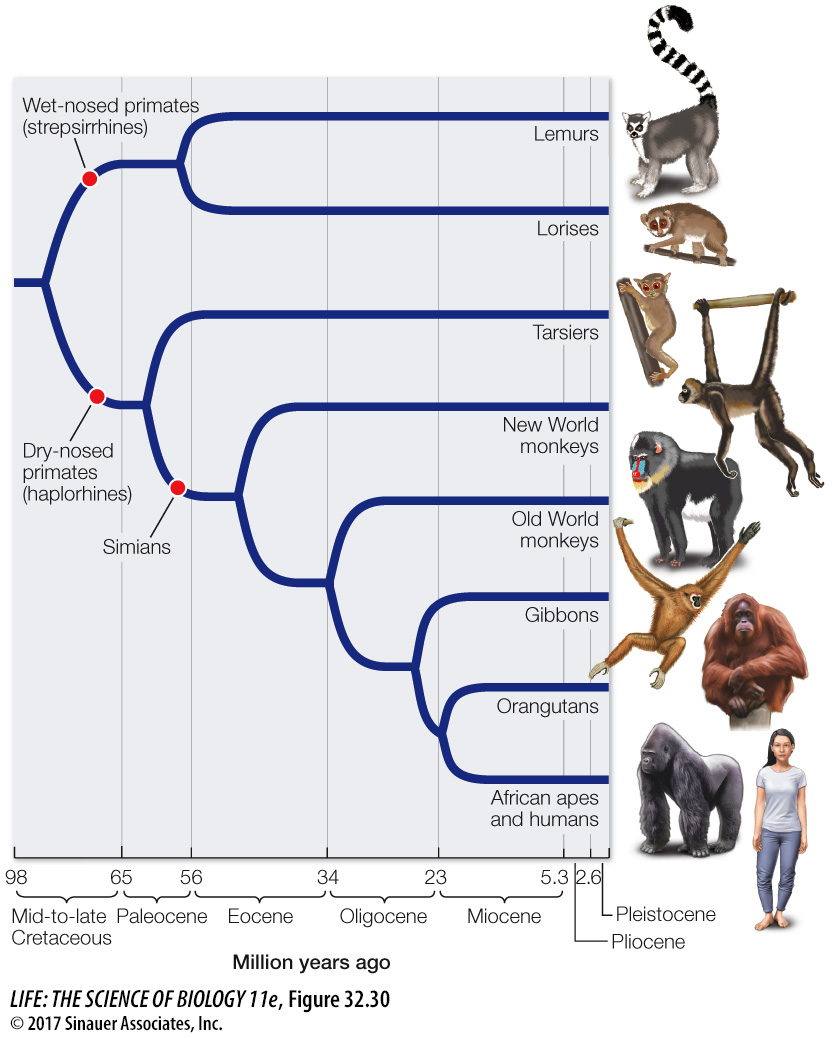Printed Page 707(cont.)
key concept
32.5
Humans Evolved among the Primates
key concept
32.5
Humans Evolved among the Primates
One lineage of small, arboreal, insectivorous eutherians underwent extensive evolutionary radiation to become the primates (Figure 32.30). Grasping limbs with opposable digits, an adaptation to arboreal life, are one of the major features that distinguish primates from other mammals.

Figure 32.30 Phylogeny of the Primates The phylogeny of primates is among the best studied of any major group of mammals. This tree is based on evidence from many genes, morphology, and fossils.
focus your learning
The two major groups of primates are the wet-
nosed primates (lemurs, lorises, and galagos) and the dry- nosed primates (tarsiers, Old and New World monkeys, and apes). Possibly driven by an increasingly complex social life, larger brains evolved in one lineage of the genus Homo.